 October 24, 2019 John E. Ross, KD8IDJ, Editor
| ||||||
ARRL Creates New Online Groups for Members to Communicate with Leadership ARRL's Committee on Communication with ARRL Members has opened new online forums where all radio amateurs -- ARRL members and non-members alike -- can discuss issues and topics in two-way conversation with ARRL leadership. The new groups are This project was based on the success over the past several years of the ARRL-LoTW (Logbook of The World) Group in responding to Amateur Radio operators' questions and generating discussion on ways to improve that program. "The LoTW initiative has clearly demonstrated the effectiveness of online Groups as a means of achieving the desired interaction," ARRL said in announcing the new groups. ARRL has added three online groups:
The existing ARRL-LOTW group, which has about 4,750 members, remains hosted by Groups.io but has moved. Everyone who subscribes to an ARRL Group is also automatically subscribed to the "ARRL Groups" group. This administrative feature will allow ARRL to convey routine announcements relevant to subscribers of all ARRL groups.
ARRL IT Manager Michael Keane, K1MK, worked with Groups.io to set up the new groups. Since these new groups are hosted on a Groups.io platform, those wishing to subscribe must use a Groups.io username and password, if they have one, or create a Groups.io account if they don't. In the months ahead, the Committee envisions creating more online groups to support two-way communication focusing on areas of additional interest to radio amateurs, including ARRL activities, services, initiatives, and policies. ARRL currently hosts members-only online forums that include Awards and Contesting. While these forums will continue to operate, participants will be encouraged to post new threads in the appropriate new groups. Participants will be expected to adhere to some basic ground rules:
New ARRL Handbook and ARRL Antenna Book Editions Available in Your Favorite Format Now shipping, the latest editions of The ARRL Handbook for Radio Communications and The ARRL Antenna Book for Radio Communications are available in formats that best suit your needs. The 2020 edition of the Handbook offers three choices -- traditional softcover, a six-volume, shrink-wrapped book set (not a boxed set), and eBook digital editions. The 24th edition of the Antenna Book now is available as a four-volume boxed set, in addition to the traditional softcover version, and eBook digital editions. The Handbook and the Antenna Book also are available in Kindle editions. The 2020 Handbook The ARRL Handbook for Radio Communications limited-edition six-volume set is workbench friendly. Grab the volume you need without having to retrieve the entire Handbook. Volumes are divided by major topic areas.
New Handbook projects and content include an analysis of Solar Cycle 24, and discussion of what we can expect from Cycle 25; an easy-to-build RF choke that can squelch the line noise from your ac generator; a guide to compare rotator ratings and how to choose, install, and maintain rotators; an annual transceiver survey (don't buy your next radio before reading it), and supplemental content, such as a high-voltage switching power supply, a tunable RF preamplifier, a 10 W audio amplifier, and more, available for download.
The Handbook six-volume book set, ARRL Item No. 1137, ISBN 978-1-62595-113-7, is $59.95 retail. The Handbook softcover edition, ARRL Item No. 1076, ISBN 978-1-62595-107-6, is $49.95 retail. Order from the ARRL Store, from your ARRL Dealer, or call 860-594-0355 or, toll-free in the US, 888-277-5289. The Handbook Kindle edition comes in six separate volumes, automatically delivered to your Kindle, for $9.99 per volume (Vol 1, Vol 2, Vol 3, Vol 4, Vol 5, Vol 6). The ARRL Antenna Book, 24th Edition ARRL introduces the limited-edition Antenna Book as a four-volume boxed set, divided into manageable volumes and including a hard slipcase for easy storage and access. Just reach for the volume you need without having to retrieve the entire Antenna Book. The four volumes are divided by major topic areas. Showcasing 80 years of antenna know-how, this 24th edition of the Antenna Book represents persistent pioneering development by radio amateurs, for radio amateurs. You'll find new and time-tested antenna projects for nearly any conceivable circumstance.
Both editions of the Antenna Book include a unique code that lets you download and install a fully searchable digital edition of the printed book and offers expanded supplemental content, software, PC board templates, and other support files. The Antenna Book four-volume boxed set, ARRL Item No. 1144, ISBN 978-1-62595-114-4, is $64.95 retail. The Antenna Book softcover edition, ARRL Item No. 1113, ISBN 978-1-62595-111-3, is $49.95 retail. The Antenna Book eBook edition, ARRL Item No. 1113MLD for Mac/Linux or ARRL Item No. 1113WD for Windows is $49.95. Order from the ARRL Store, from your ARRL Dealer, or call 860-594-0355 or toll-free in the US, 888-277-5289. The Antenna Book Kindle edition comes in four separate volumes, automatically delivered to your Kindle, for $9.99 per volume (Vol 1, Vol 2, Vol 3, Vol 4). Read more. New Antenna Concept Uses Saltwater and Plastic Instead of Metal Conductor A new antenna that uses saltwater and plastic instead of metal could make it easier to build VHF and UHF networks, an IEEE Spectrum article asserts. Michelle Hamson says, "Being able to focus the energy of a radio signal toward a given receiver means you can increase the range and efficiency of transmissions," in her article, "New Antenna Uses Saltwater and Plastic to Steer Radio Beams." According to the article, beam-steering or beamforming on a large scale is one of the key underlying mechanisms behind the rollout of 5G networks. The configuration of the saltwater antenna allows 360° beam-steering and works for frequencies between 334 and 488 MHz.
"The proposed design consists of a circular ground plane, with 13 transparent acrylic tubes that can be filled with (or emptied of) salt water on demand. One tube is located in the center to act as a driven monopole. Surrounding it are 12 parasitic monopoles," the article explains. "The 12 remaining monopoles, when filled with water, work together to act as reflectors and give the broadcasted signal direction." "The attractive feature of using water monopoles is that both the water height and activating status can be dynamically tuned through microfluidic techniques, which has a higher degree of design flexibility than metal antennas," explains Xing. One limitation of salt water-based antennas, she notes, is that that the permittivity of salt water -- i.e, how it interacts with electrical fields -- is sensitive to temperature variations. The Doctor Will See You Now! "Beverage Antennas" is the topic of the new (October 24) episode of the ARRL The Doctor is In podcast. Listen...and learn!
Every 2 weeks, your host, QST Editor-in-Chief Steve Ford, WB8IMY, and the Doctor himself, Joel Hallas, W1ZR, will discuss a broad range of technical topics. You can also email your questions to [email protected], and the Doctor may answer them in a future podcast. Enjoy ARRL The Doctor is In on Apple iTunes, or by using your iPhone or iPad podcast app (just search for ARRL The Doctor is In). You can also listen online at Blubrry, or at Stitcher (free registration required, or browse the site as a guest) and through the free Stitcher app for iOS, Kindle, or Android devices. If you've never listened to a podcast before, download our beginner's guide. IARU Secretary David Sumner, K1ZZ, Offers Amateur Radio Perspective on WRC-19 Writing in a special World Radiocommunication Conference 2019 (WRC-19) edition of ITU News Magazine, International Amateur Radio Union (IARU) Secretary David Sumner, K1ZZ, offers an overview of conference agenda items and issues pertaining to amateur radio in Sumner noted that the IARU has participated in ITU conferences since 1927 and is a member of the ITU Radiocommunication and Development sectors. According to Sumner, the IARU's overall objectives for WRC-19 are global harmonization of the amateur 50 - 54 MHz allocation; maintenance of existing spectrum access for amateurs, and strengthening protections for radiocommunication services against interference from other RF generators. "When new technology is developed that generates radiofrequency energy, it is essential that adequate protection of radiocommunication services be included in the system design," Sumner said. He concluded by noting, "No future agenda items for new or harmonized spectrum allocations for the amateur services are being sought at WRC-19. This position does not preclude seeking specific allocations in the unallocated spectrum above 275 GHz, if allocations to other services are considered. IARU is carefully monitoring proposals for future agenda items that may impact existing amateur and amateur-satellite allocations." Read more. Pitcairn Island VP6R DXpedition Proving Popular; Injured Operator Evacuated At mid-week, the Pitcairn Island VP6R DXpedition reported some 35,000 contacts in the log, including what team leader Glenn Johnson, W0GJ, called "a lot of activity" on 12 and 10 meters. VP6R also has been taking advantage of FT8 digital protocol, operating in fox/hound (F/H) mode. The team arrived at the South Pacific island on October The team is down to 12 operators after one individual fell and suffered several fractures. "Our evacuated team member has made it to the hospital in Papeete, French Polynesia," Johnson said in a mid-week update. "DXpeditions to remote places are not without risk, and medical care is quite limited at best," he pointed out in an earlier report. The injured operator is not being identified for privacy reasons. By Saturday, the DXpedition team had settled into its operating routine from two sites -- one at Christian's home and the other at an old radio station site that is serving as VP6R's primary low-band site. "Pitcairn has power from 8 AM until 10 PM," Johnson explained. "After 10 PM, Johnson stressed that those attempting to work VP6R on FT8 in F/H mode must use a frequency above 1,000 Hz; the DXpedition is transmitting somewhere below 500 Hz. "The software will move your transmit frequency down automatically when your turn comes up in the queue, if you have F/H mode set up properly," he said. "If you see your FT8 contact confirmed with 'RR73,' you can be assured that you are in the log." VP6R is active around the clock on 20 meters on more than one mode. The DXpedition team will be on all bands during the CQ World Wide DX phone contest, October 25 - 26. The VP6R logs are periodically uploaded to Club Log.
FCC Turns Down Petition to Amend Amateur Radio Identification Rules The FCC has denied a Petition for Rule Making (PRM) to amend Part 97 station identification rules to better accommodate and simplify station identification during emergency nets, drills, or activations. ARRL member Robert A. Dukish, KK8DX, of Canfield, Ohio, had sought a change to Section 97.119(a) of the rules to allow a single point of transmission for station ID on those occasions. He proposed permitting a net control station or other designated In turning down Dukish's petition, Scot Stone, the Deputy Chief of the Wireless Telecommunications Bureau's Mobility Division, said commenters overwhelmingly opposed the proposal. "They argue that the current rule strikes the appropriate balance between the need to identify the source of transmissions and ease of communication," Stone wrote. "Commenters state that, in their years of experience with amateur emergency communications, the station identification requirement has not proven to be a burden or obstacle, and that the current procedure actually contributes to efficient operations by providing a clear indication that a communication has ended and the channel is available." Stone said some commenters asserted that Dukish's proposed procedure would be unworkable and cause confusion, while others characterized his proposal as a solution in search of a problem. "The purpose of the station identification requirement is to make the source of transmissions clearly known to those receiving those transmissions," Stone wrote. "Separating the call sign from each transmission would defeat this purpose." Moreover, he said there's no evidence that the current station ID requirements have hindered amateur radio emergency communications. The K7RA Solar Update Tad Cook, K7RA, Seattle, reports: On Monday, October 21, the 10.7-centimeter solar flux sank to its lowest level in recorded history. The solar flux was 64, just slightly lower than the 64.4 flux value recorded on July 2, 1954, at the start of Solar Cycle 19, which was by far the biggest solar cycle ever recorded. I understand that the solar flux dipped to 64.2 in 1906.
Predicted solar flux for the next 45 days is 66 on every day from October 24 through December 7. The predicted planetary A index is 22 and 30 on October 24 - 25; 15 on October 26 - 28; 8 on October 29; 5 on October 30 - November 16; 15, 8, and 5 on November 17 - 19; 20 and 24 on November 20 - 21; 15 on November 22 - 23; 12 and 8 on November 24 - 25, and 5 on November 26 - December 7. Sunspot numbers for October 17 - 23 were 0, 0, 0, 0, 0, 0, and 0, for a mean of 0. The 10.7-centimeter flux was 66.1, 66.1, 66, 65, 64, 65.6, and 64.5, for a mean of 65.3. Estimated planetary A indices were 6, 6, 5, 6, 5, 3, and 2, with a mean of 4.7. The middle latitude A index was 4, 4, 3, 4, 4, 2, and 1, with a mean of 3.1. A comprehensive K7RA Solar Update is posted on Fridays on the ARRL website. For more information concerning radio propagation, visit the ARRL Technical Information Service, read "What the Numbers Mean...," and check out K9LA's Propagation Page. A propagation bulletin archive is available. Monthly charts offer propagation projections between the US and a dozen DX locations. Share your reports and observations. Just Ahead in Radiosport
See the ARRL Contest Calendar for more information. For in-depth reporting on amateur radio contesting, subscribe to The ARRL Contest Update via your ARRL member profile email preferences. MARS Members to Work with Radio Amateurs during SET and DOD COMEX 19-4 During October and corresponding with the ARRL Simulated Emergency Test (SET), Military Auxiliary Radio System (MARS) members will be reaching out to the amateur radio community to continue building working relationships and improving interoperability. As part of this effort, MARS will be promoting the use of a serial phase-shift keying protocol, Military Standard 188-110 (M110), on the 60-meter interoperability channels. Radio amateurs are authorized to Starting on November 2 and continuing until November 17, the MARS community will be executing Department of Defense (DOD) Communications Exercise (COMEX) 19-4. MARS members will use the exercise to continue training and refining their operator skills to provide situational awareness information, such as county status reports and weather observations. To announce the kickoff of the exercise, WWV and WWVH will broadcast voice announcements starting on or about October 31. WWV will transmit the announcements at 10 minutes past the hour, while WWVH will transmit them at 10 minutes before the hour. The communication exercise will culminate on the evening of November 16 with military stations sending M110 messages to the amateur community on 60-meter channel 1 (5330.5 kHz USB). Arizona Club Takes Advantage of Low Bands to Support 100-Mile Endurance Run The Coconino Amateur Radio Club (CARC) provided safety and coordination communications for the 100-mile Stagecoach Line Run over the September 21 - 22 weekend. This 31-hour endurance run from Flagstaff to the Grand Canyon takes place every September. Supporting the event requires planning and commitment. Because of the geographical coverage required, the club's amateur radio support even took advantage of 160 meters, which is not a band typically associated with public service communication.
"Because we are in a solar minimum, a combination of bands and communication methods were required in order to track and maintain contact with the numerous stations," said Dan Shearer, N7YIQ, the club's Public Information Officer. "What worked well at 3 o'clock in the afternoon was not going to work at 2 in the morning." The club's communication infrastructure required a combination of HF and VHF/UHF equipment that included setting up portable repeaters and stations powered by generators and other power sources. "When you add in the cold weather of the high desert in September and the possibility of rain and snow, this becomes a test of what Amateur Radio may be called upon to do to support a disaster somewhere in the nation," Shearer said. CARC members invested more than 300 hours of their time in planning and supporting the race, helped by a few additional volunteers from Glendale and Prescott. Nineteen club members staffed eight sites, where volunteers set up camps and kept vigil through the night to track and make sure runners were accounted for throughout the race.
In addition to tracking runners into and out of each aid station, net control entered these times into an online spreadsheet as they progressed through the race, allowing runners to be located easily in case they did not make it to the next checkpoint. During the event, CARC members helped locate two missing runners and helped save the life of another who developed severe asthma. Medical care and treatment during these types of extreme events poses a significant challenge, as EMS responses are delayed. "Much of the area between Flagstaff and the Grand Canyon is US Forest Service land, and travel through these areas by vehicles is slow," Shearer explained. "Severe emergencies can only be handled by aircraft, if conditions permit." During the race, 75 meters worked well during the day, but 160 meters was put into play after dark. Cross-band repeaters were placed at remote sites to allow access to existing repeaters. Although VHF and UHF were used, these links at times became unusable, and alternate forms and bands were required to maintain contact. Getting It Right! The item, "PACTOR Developer SCS Announces Monitoring Software," which appeared in the October 17 edition of The ARRL Letter, included some inaccurate language. The story should have said, "The issue of message transparency arose in recent months with respect to renewed attention to ARRL's so-called 'symbol rate' petition for rulemaking (RM-11708) and the accommodation of automatically controlled digital stations (ACDS) -- many of which employ Winlink. Some commenters on ARRL's petition have asserted incorrectly that PACTOR facilitates de facto message encryption, which would violate FCC Amateur Service rules." (Neither Winlink nor PACTOR are encrypted.) Upcoming ARRL Section, State, and Division Conventions
Find conventions and hamfests in your area.
. .
Subscribe to...
Free of charge to ARRL members...
| ||||||
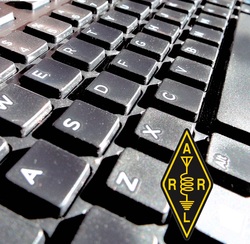 aimed at enhancing communication among ARRL leadership, staff, members, and prospective members, in a manner that enables timely updates and collegial discussion.
aimed at enhancing communication among ARRL leadership, staff, members, and prospective members, in a manner that enables timely updates and collegial discussion.-Six-Volumes.jpg) ARRL introduced the first edition of The Radio Amateur's Handbook in 1926. Ever since, the Handbook has been recognized as a benchmark for radio communications learning and applied knowledge. This 97th edition is a complete guide to radio experimentation, discovery, and innovation.
ARRL introduced the first edition of The Radio Amateur's Handbook in 1926. Ever since, the Handbook has been recognized as a benchmark for radio communications learning and applied knowledge. This 97th edition is a complete guide to radio experimentation, discovery, and innovation.(1).gif) Both Handbook formats include a unique code so you can download and install a fully searchable digital edition of the printed book, as well as expanded supplemental content, software, PC board templates, and other support files.
Both Handbook formats include a unique code so you can download and install a fully searchable digital edition of the printed book, as well as expanded supplemental content, software, PC board templates, and other support files.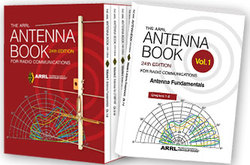 New Antenna Book projects and content include info about the highly popular HF transmitting loops; an all-new chapter on VHF/UHF antennas; some new MF, HF, and 6-meter antennas; the importance of ground and bonding; how to troubleshoot your antenna tuner quickly and easily; getting the most out of your antenna analyzer, and designing a high-performance "Band-Optimized Log Periodic Dipole Array."
New Antenna Book projects and content include info about the highly popular HF transmitting loops; an all-new chapter on VHF/UHF antennas; some new MF, HF, and 6-meter antennas; the importance of ground and bonding; how to troubleshoot your antenna tuner quickly and easily; getting the most out of your antenna analyzer, and designing a high-performance "Band-Optimized Log Periodic Dipole Array."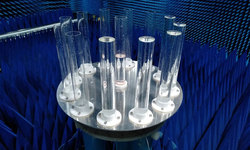 In a recent publication in IEEE Antennas and Wireless Propagation Letters, Lei Xing and her colleagues at the College of Electronic and Information Engineering at Nanjing University of Aeronautics and Astronautics in China have proposed a new saltwater-based antenna that achieves 12 directional beam-steering states, and one omnidirectional state.
In a recent publication in IEEE Antennas and Wireless Propagation Letters, Lei Xing and her colleagues at the College of Electronic and Information Engineering at Nanjing University of Aeronautics and Astronautics in China have proposed a new saltwater-based antenna that achieves 12 directional beam-steering states, and one omnidirectional state. Sponsored by
Sponsored by  his article, "Views of the International Amateur Radio Union on WRC-19 Agenda Items." WRC-19 gets under way on October 28 in Sharm el-Sheikh, Egypt, and continues until November 22.
his article, "Views of the International Amateur Radio Union on WRC-19 Agenda Items." WRC-19 gets under way on October 28 in Sharm el-Sheikh, Egypt, and continues until November 22.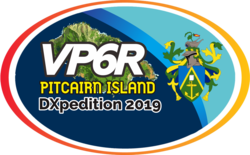 17 and at the home of Andy Christian, where the DXpedition's equipment had been shipped well in advance.
17 and at the home of Andy Christian, where the DXpedition's equipment had been shipped well in advance.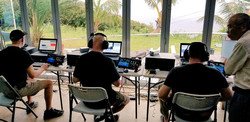 we switch to generators until morning. The 'radio site' is 100% generator powered."
we switch to generators until morning. The 'radio site' is 100% generator powered." Third-graders at Dorothy Grant Elementary School in Fontana, California, and their teacher Bev Matheson, WA6BK, are following the Pitcairn Island DXpedition teams travels and amateur radio operation, using the school's club station,
Third-graders at Dorothy Grant Elementary School in Fontana, California, and their teacher Bev Matheson, WA6BK, are following the Pitcairn Island DXpedition teams travels and amateur radio operation, using the school's club station, .jpg) participant to announce the call signs of every station taking part in the net or exercise, when tactical call signs often are in use, at 10-minute intervals, using automatic CW identification.
participant to announce the call signs of every station taking part in the net or exercise, when tactical call signs often are in use, at 10-minute intervals, using automatic CW identification.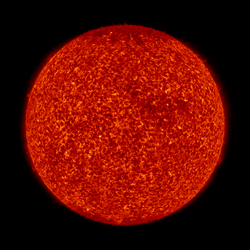 Over the October 17 - 23 reporting week, the average daily solar flux was 65.3 -- 2 points lower than last week. The average daily planetary A index dropped from 6.4 to 4.7, while the average daily mid-latitude A index declined from 5.1 to 3.1. And, of course, no sunspots showed up.
Over the October 17 - 23 reporting week, the average daily solar flux was 65.3 -- 2 points lower than last week. The average daily planetary A index dropped from 6.4 to 4.7, while the average daily mid-latitude A index declined from 5.1 to 3.1. And, of course, no sunspots showed up.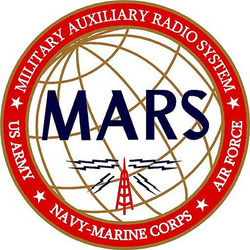 use this digital mode on the five 60-meter interop channels, although M110 exceeds the allowable symbol rate that radio amateurs may use on all other HF bands.
use this digital mode on the five 60-meter interop channels, although M110 exceeds the allowable symbol rate that radio amateurs may use on all other HF bands..jpg)
.jpg)








